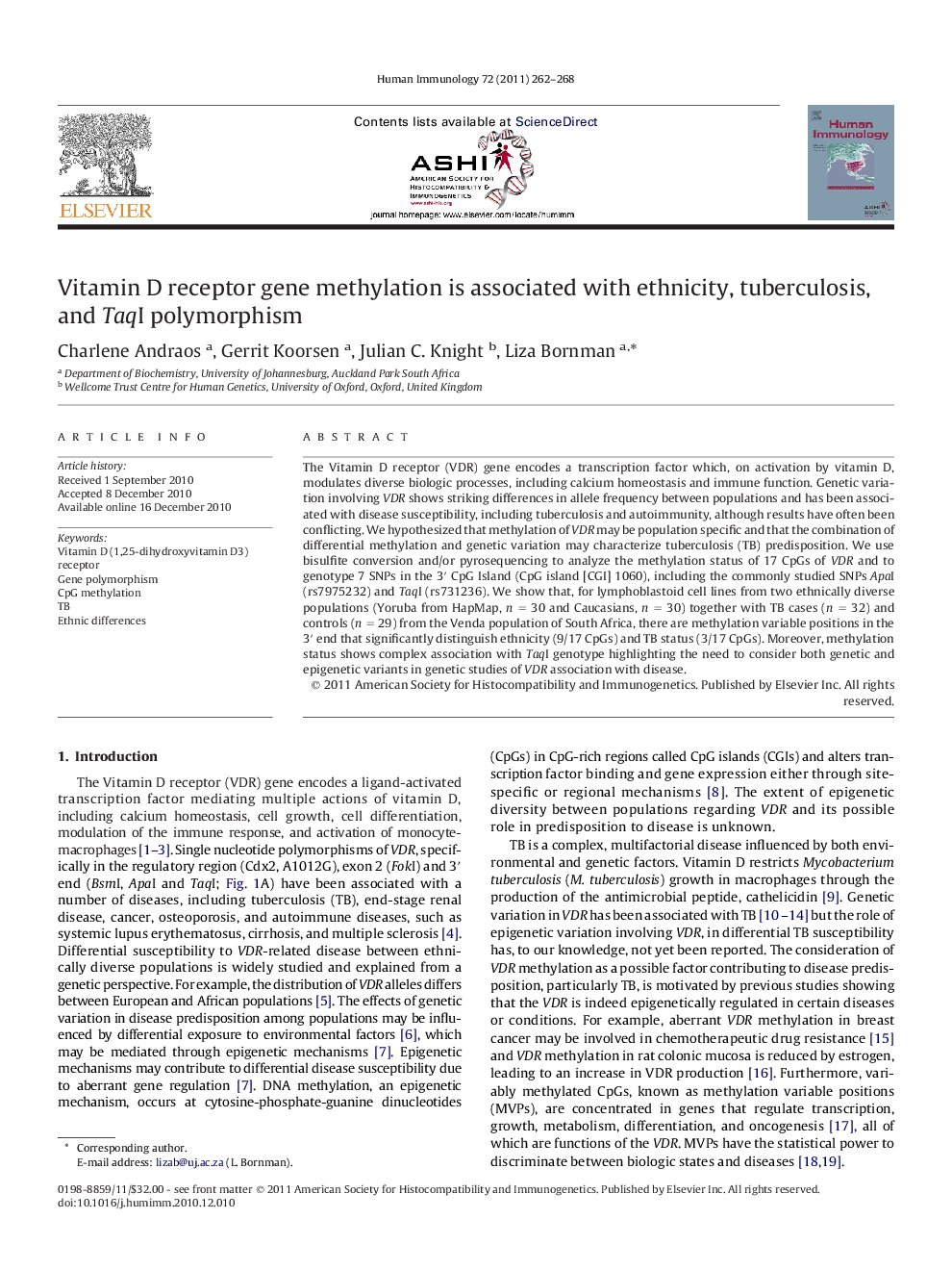| Article ID | Journal | Published Year | Pages | File Type |
|---|---|---|---|---|
| 3351555 | Human Immunology | 2011 | 7 Pages |
The Vitamin D receptor (VDR) gene encodes a transcription factor which, on activation by vitamin D, modulates diverse biologic processes, including calcium homeostasis and immune function. Genetic variation involving VDR shows striking differences in allele frequency between populations and has been associated with disease susceptibility, including tuberculosis and autoimmunity, although results have often been conflicting. We hypothesized that methylation of VDR may be population specific and that the combination of differential methylation and genetic variation may characterize tuberculosis (TB) predisposition. We use bisulfite conversion and/or pyrosequencing to analyze the methylation status of 17 CpGs of VDR and to genotype 7 SNPs in the 3′ CpG Island (CpG island [CGI] 1060), including the commonly studied SNPs ApaI (rs7975232) and TaqI (rs731236). We show that, for lymphoblastoid cell lines from two ethnically diverse populations (Yoruba from HapMap, n = 30 and Caucasians, n = 30) together with TB cases (n = 32) and controls (n = 29) from the Venda population of South Africa, there are methylation variable positions in the 3′ end that significantly distinguish ethnicity (9/17 CpGs) and TB status (3/17 CpGs). Moreover, methylation status shows complex association with TaqI genotype highlighting the need to consider both genetic and epigenetic variants in genetic studies of VDR association with disease.
